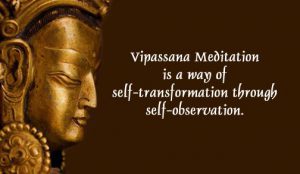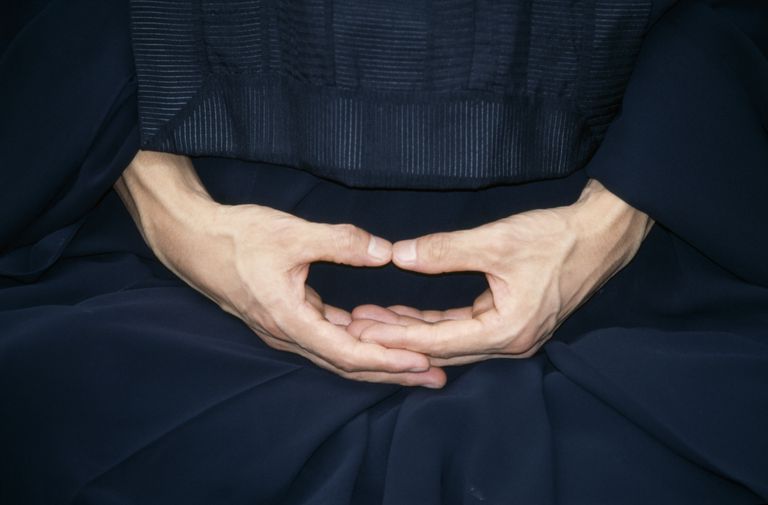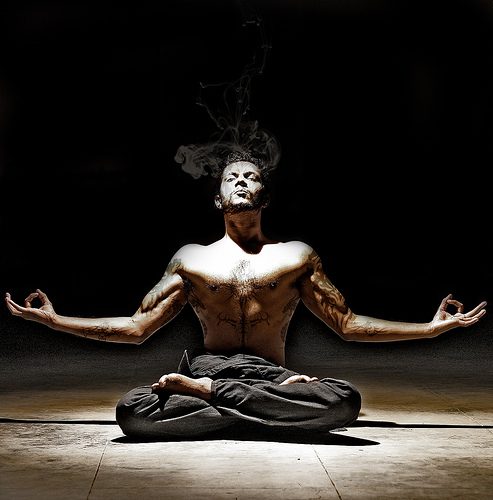Zen meditation uses two different tacks: the first is the direct plunge into awareness by sheer will. You sit down and just sit, meaning that you toss out of your mind everything except pure awareness of sitting. This sounds very simple. It is not. The second Zen approach, used in the Rinzai School, is that of tricking the mind out of conscious thought and into pure awareness, says Navodita, our Associate Editor, exclusively for Different Truths.
Meditation can, on the one hand, help you in increasing concentration and awareness, on the other hand, it can help you in living your life more peacefully and with love and care. Meditation is all about increasing awareness, especially Buddhist meditation. Within the Buddhist tradition, concentration is also highly valued. But a new element is added and more highly stressed: the element of awareness. All Buddhist meditation aims at the development of awareness, using concentration as a tool toward that end. The Buddhist tradition is very wide, however, and there are several diverse routes to this goal.
Zen meditation uses two different tacks: the first is the direct plunge into awareness by sheer will. You sit  down and just sit, meaning that you toss out of your mind everything except pure awareness of sitting. This sounds very simple. It is not. The second Zen approach, used in the Rinzai School, is that of tricking the mind out of conscious thought and into pure awareness. This is done by giving a student an unsolvable riddle; which he must solve nonetheless, and by placing him in a horrendous training situation. Since he cannot escape from the pain of the situation, he must flee into a pure experience of the moment: there is nowhere else to go. Zen is tough; it is effective for most people but it is tough to follow.
down and just sit, meaning that you toss out of your mind everything except pure awareness of sitting. This sounds very simple. It is not. The second Zen approach, used in the Rinzai School, is that of tricking the mind out of conscious thought and into pure awareness. This is done by giving a student an unsolvable riddle; which he must solve nonetheless, and by placing him in a horrendous training situation. Since he cannot escape from the pain of the situation, he must flee into a pure experience of the moment: there is nowhere else to go. Zen is tough; it is effective for most people but it is tough to follow.
Another stratagem, Tantric Buddhism, is nearly the reverse. Conscious thought, at least the way we usually do it, is the manifestation of ‘ego’, the ‘you’ that you usually think you are. Conscious thought is tightly connected with self-concept. The self-concept or ego is nothing more than a set of reactions and mental images that are artificially pasted to the flowing process of pure awareness. Tantra seeks to obtain pure awareness by destroying the ego image. This is accomplished by a process of visualization. The student is given a particularly religious image to meditate upon, for example, one of the deities from the tantric pantheon. She does this in so thorough a fashion that she becomes that entity. She takes off her own identity and puts on another. This takes a while, as you may imagine, but it works. During the process, she is able to watch the way in which the ego is constructed and put in place. She comes to recognize the arbitrary nature of all egos, including her own, and she escapes from bondage to the ego. She is left in a state where she may have an ego if she chooses – either her own or whichever other she might wish- or she can do without one. Result: pure awareness. Tantra is not that easy either.
 Vipassana is the oldest of Buddhist practices. It is the direct and gradual cultivation of mindfulness and awareness. One’s attention is carefully directed to an intense examination of certain aspects of one’s own existence. The meditator is trained more and more to notice the flow of life experience. Vipassana is a gentle technique but is also very thorough. It is an ancient and codified system of training your mind, a set of exercises dedicated to the purpose of becoming more and more aware of your own life experience. It is attentive listening, mindful seeing, and careful testing. We learn to smell acute, touch fully, and really pay attention to the changes taking place in all these experiences. The object of Vipassana practice is to learn to see the truths of impermanence, unsatisfactoriness, and selflessness of the phenomenon. Vipassana is a set of training procedures that gradually opens us to this new view of reality that it truly is. Your attitude has to be right while practicing: “I want it done and have a positive impact on my life. I need to surrender. Only when I surrender can there be a positive change in me.”
Vipassana is the oldest of Buddhist practices. It is the direct and gradual cultivation of mindfulness and awareness. One’s attention is carefully directed to an intense examination of certain aspects of one’s own existence. The meditator is trained more and more to notice the flow of life experience. Vipassana is a gentle technique but is also very thorough. It is an ancient and codified system of training your mind, a set of exercises dedicated to the purpose of becoming more and more aware of your own life experience. It is attentive listening, mindful seeing, and careful testing. We learn to smell acute, touch fully, and really pay attention to the changes taking place in all these experiences. The object of Vipassana practice is to learn to see the truths of impermanence, unsatisfactoriness, and selflessness of the phenomenon. Vipassana is a set of training procedures that gradually opens us to this new view of reality that it truly is. Your attitude has to be right while practicing: “I want it done and have a positive impact on my life. I need to surrender. Only when I surrender can there be a positive change in me.”
One popular human strategy for dealing with difficulty is auto-suggestion: when something nasty pops up, you convince yourself it is not there or you convince yourself it is pleasant rather than unpleasant. The Buddha’s tactic is quite the reverse. Rather than hide it or disguise it, the Buddha’s teaching urges you to examine it to death. When you are having a bad time, observe it squarely, examine that experience and observe it mindfully, study the phenomenon and learn its mechanics. The way out of a trap is to study the trap itself. The trap can’t trap you if it has been taken to pieces. You get out of it by removing it from pieces to pieces. The result of this is freedom.
Buddhist philosophy survives on the thought- pain is inevitable, suffering is not. Pain and suffering are two different animals. A bit of time spent in learning alternatives to those habit patterns is a time well invested. Buddhism does advise you to invest time and energy in learning to deal with unpleasantness.
Next time you sit with your cross-legged, do try the Buddhist meditation.
©Navodta Pande
Photos from the Internet
#BuddhistMeditation #Yoga #Awareness #HolisticHealth #BuddistPractice #TantricBuddhism #Zen #RinzaiSchool #Awareness #DifferentTruths








 By
By

 By
By
 By
By